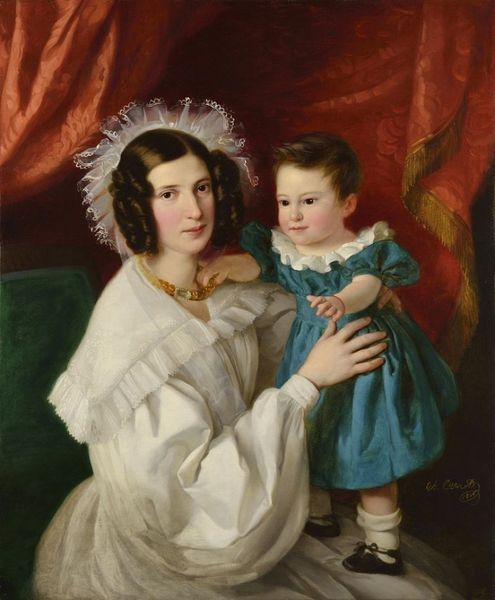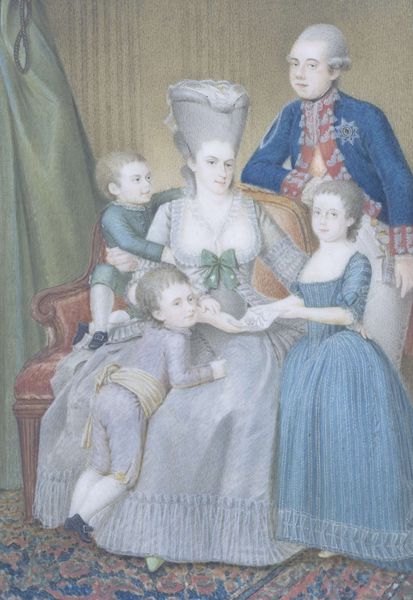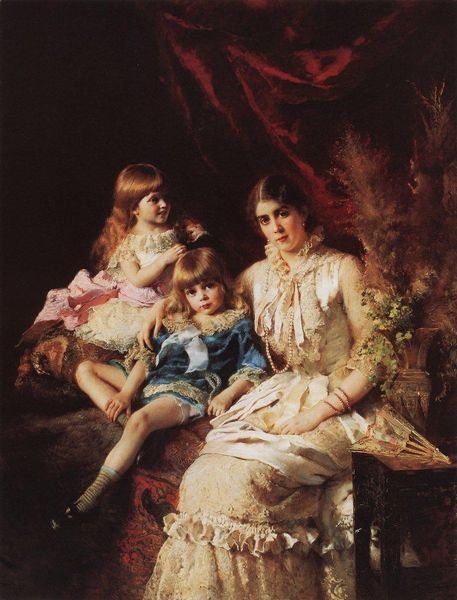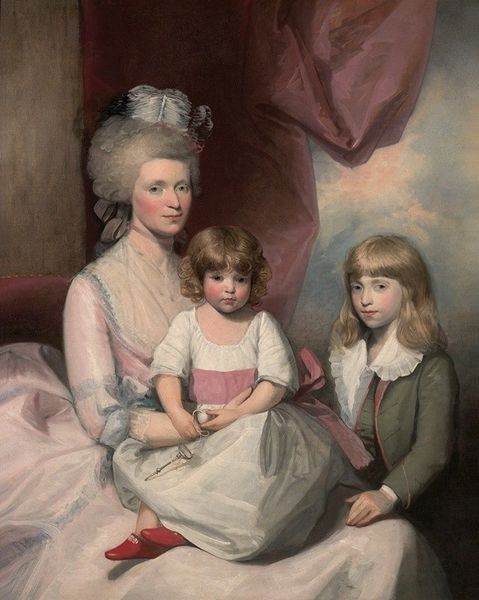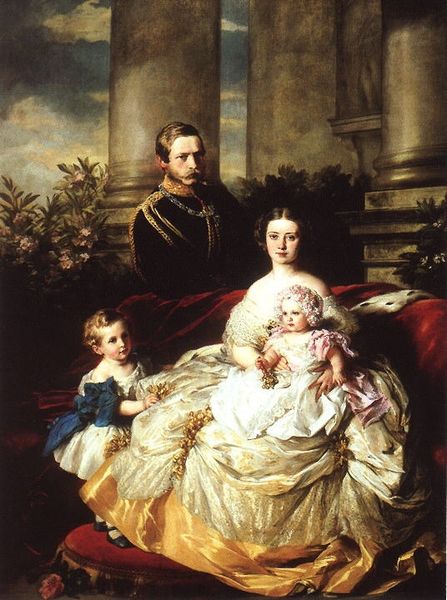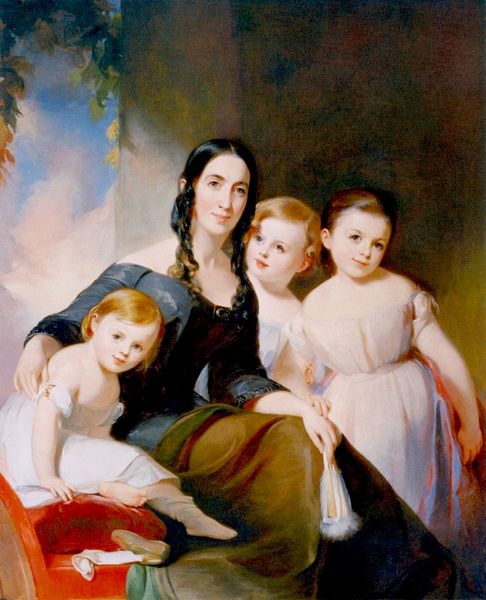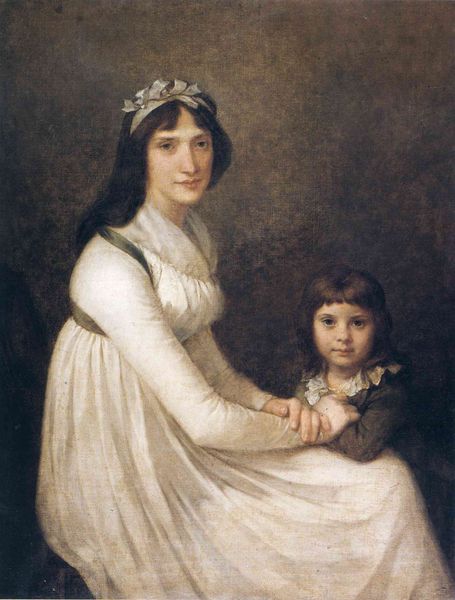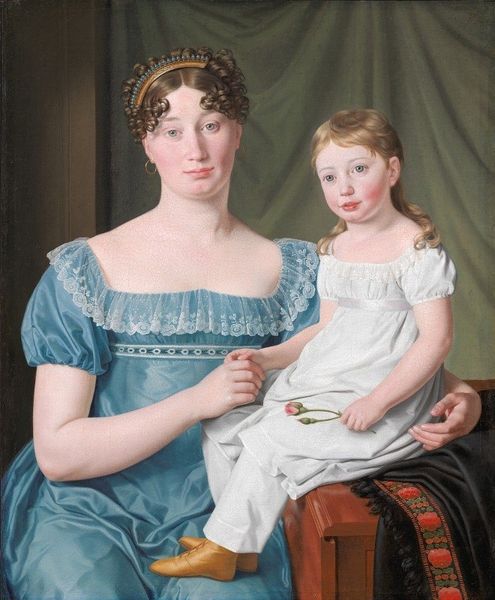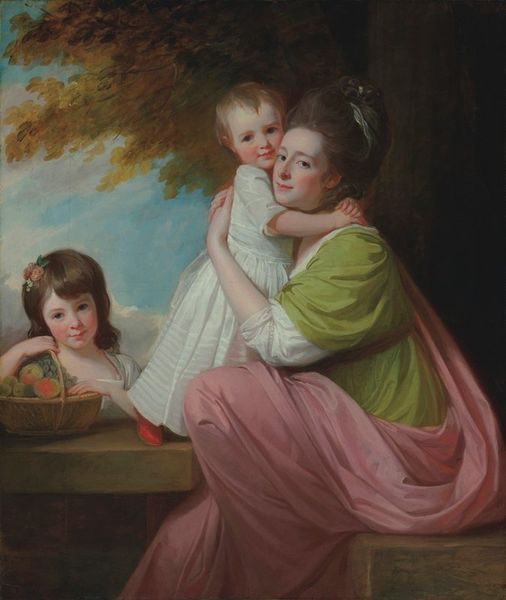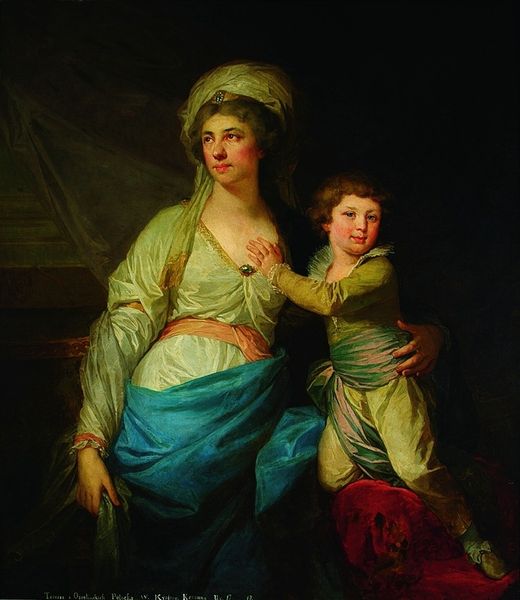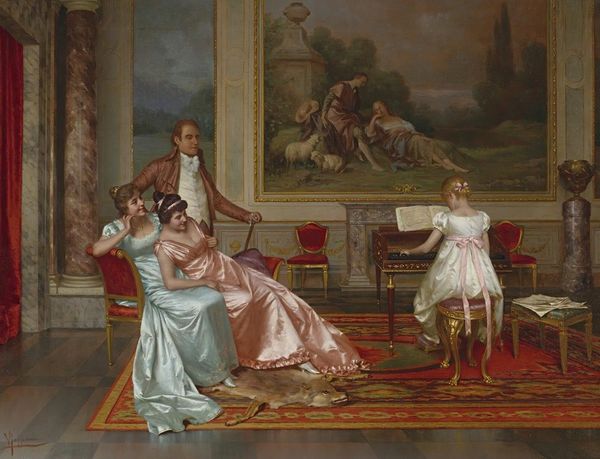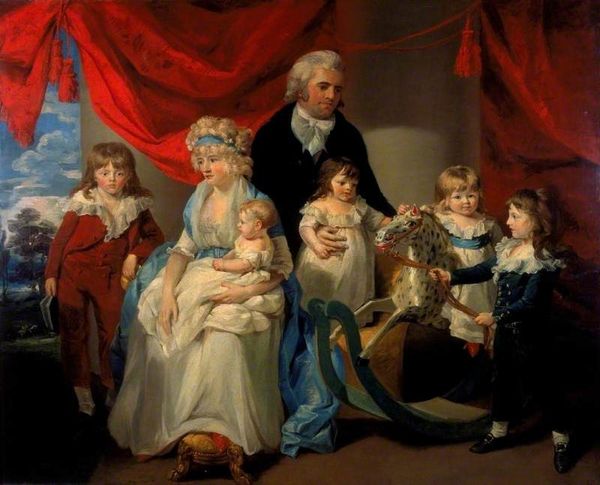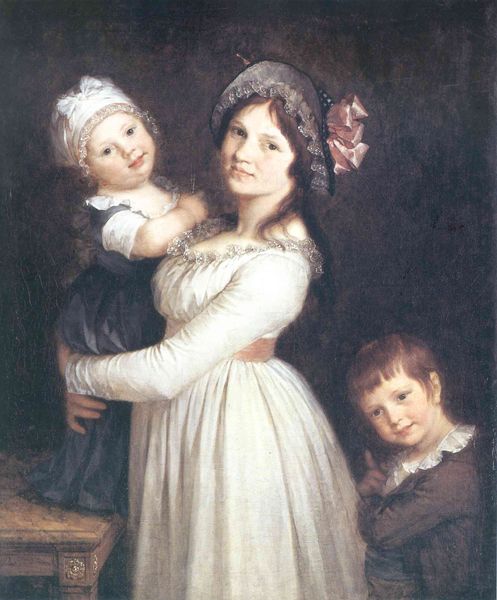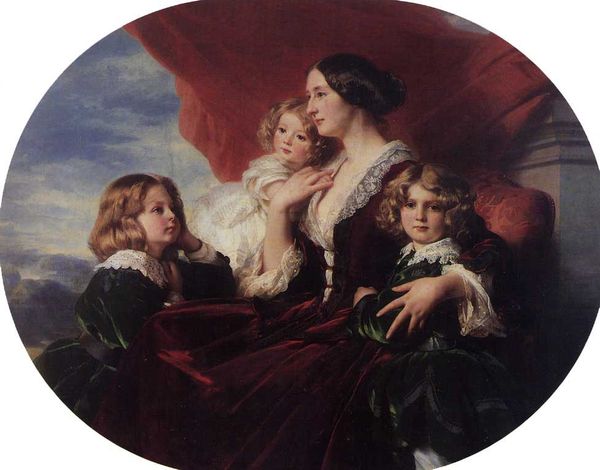
painting
#
portrait
#
painting
#
group-portraits
#
romanticism
#
history-painting
#
realism
Copyright: Public domain
Editor: So, this is a portrait, titled "Mary Phoebe Spencer Nelson Taylor and Daughters." It's undated, but it portrays a woman and her two children. The painting seems quite formal, even stiff, but there’s something intimate about the arrangement. What are your thoughts about this? Curator: For me, it’s impossible to ignore the labor embedded in this seemingly simple scene. Consider the materials—oil paint meticulously layered onto canvas, likely woven from flax. These raw elements transform into social currency through labor, depicting status. Who cultivated the flax, processed the paint, and crafted the frame? These invisible hands support this presentation of bourgeois life. Editor: That’s a very interesting point. I hadn't considered the hidden labour aspect, just the artist's skill. Curator: Exactly. Look at the fabric of their dresses. The production and global trade in textiles during this period—the cotton, the dyes—all speak to the networks of commerce and, more problematically, often exploitation that facilitated the accumulation of wealth needed for such commissions. How might viewing this painting shift if we center the unseen workers rather than the celebrated family? Editor: That makes me see the subjects differently too. Is their wealth tied to oppression in some way? Is the luxury here creating exploitation? Curator: Perhaps, and even if not explicitly, this painting benefits from a system where wealth accumulation for some is inherently tied to disadvantage for others. Even the sitter’s pose—stiff and proper—can be read as the performance of a certain class position made possible by the very labor we've discussed. It's also interesting to wonder who produced the frame and where the dyes for the background curtain came from. Editor: That is compelling! It reframes the artwork's visual elements completely. I will certainly approach portraits differently now. Curator: Precisely. By questioning the materiality and production, we unpack the painting's seemingly straightforward representation, and uncover the complex realities of its creation.
Comments
No comments
Be the first to comment and join the conversation on the ultimate creative platform.
